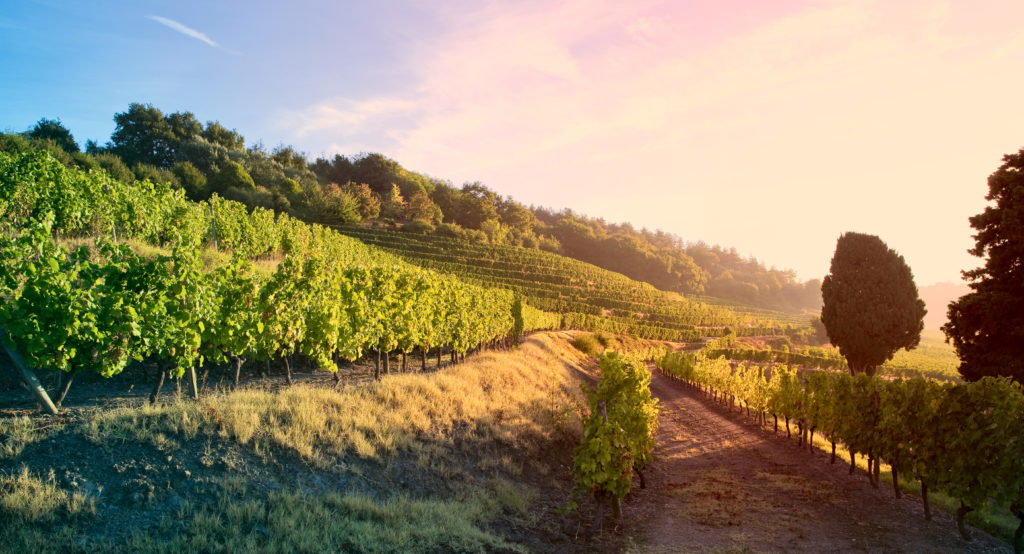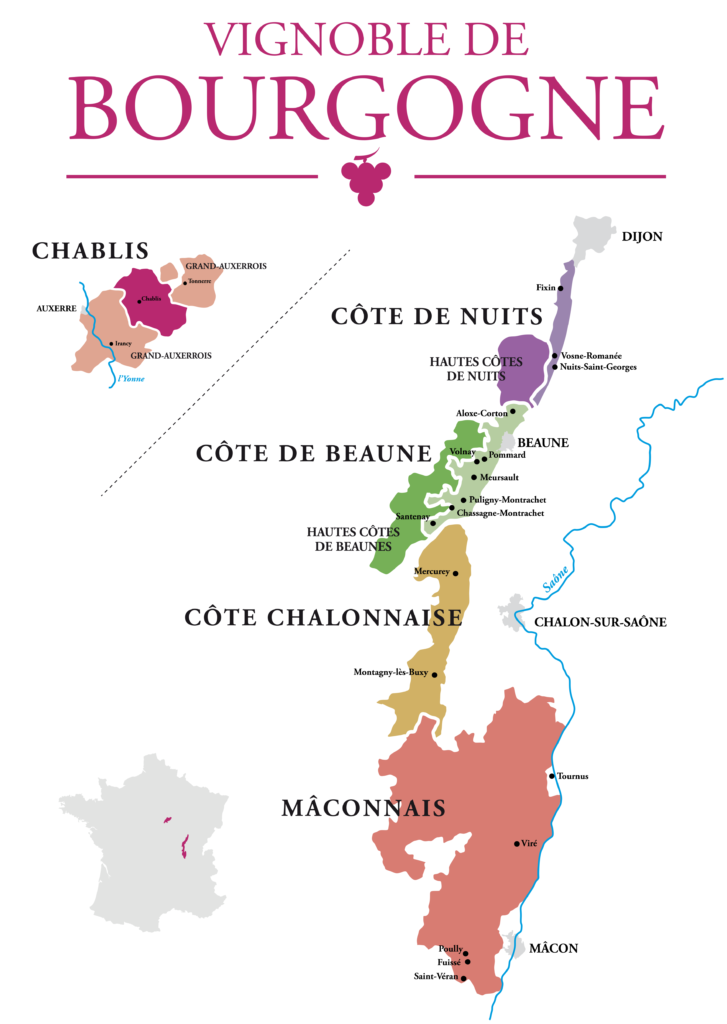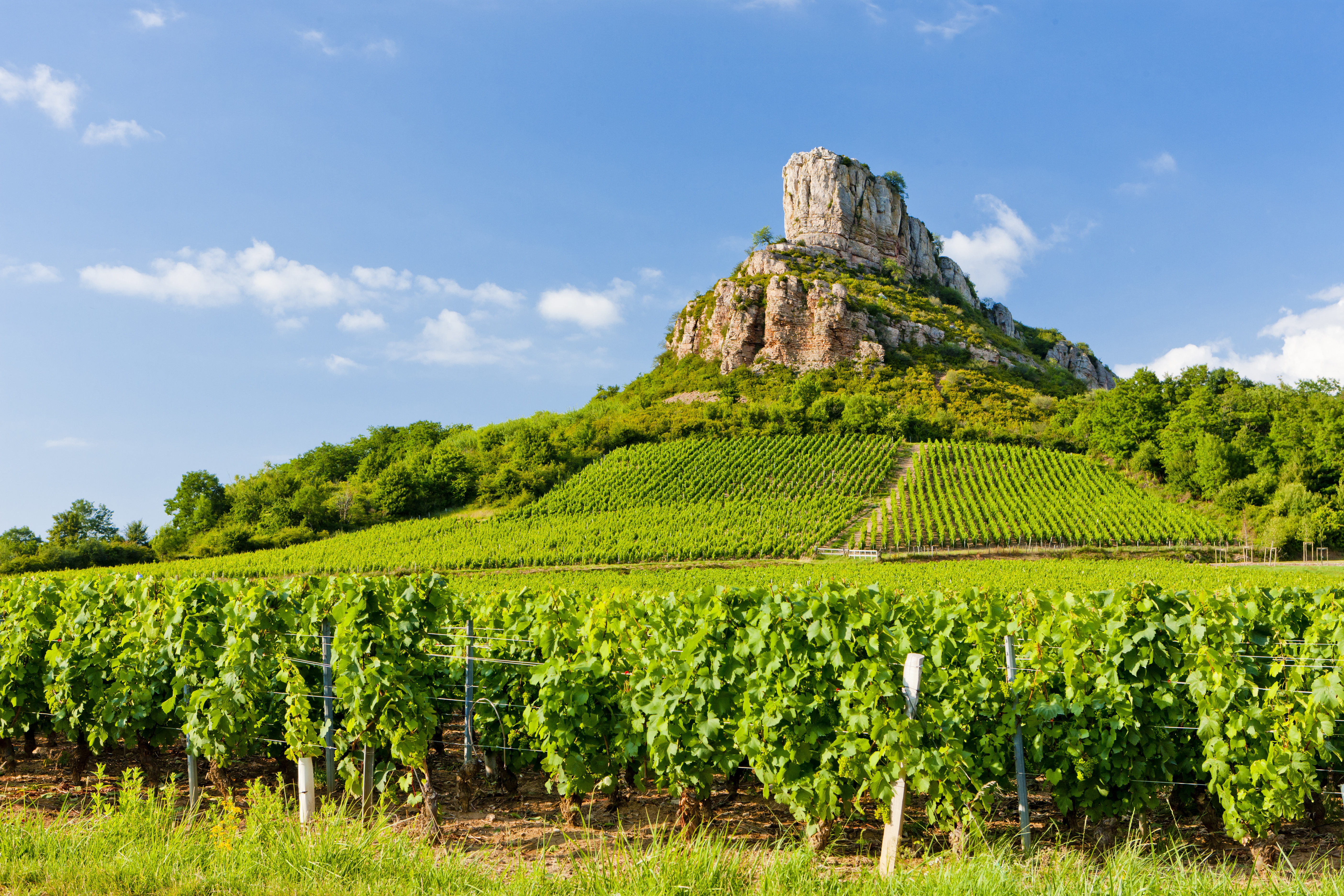Ok, it’s officially the theme for this series. You’ve heard of Burgundy, so we will skip over that part. But as with all facets of the Understanding AOC writings, what is in the bottle!?
If it is a red wine, it is Pinot Noir. If it is a white wine, it is Chardonnay.
As always, there are exceptions to the rules, but that is the gist of it.
Other grapes you will find would be reds made from Gamay, but that is only in the Beaujolais region at the southern end of Burgundy, noted as Beaujolais on the labels, and white wine made from Aligoté although that is far less common than Chardonnay across the region.
The region makes a sparkling wine called Cremant de Bourgogne that, like Champagne, has the secondary fermentation in bottle – pretty damn good juice for a fraction of the Champagne prices.
The key to Burgundy and knowing what you’re buying (since the grape variety is pretty simplified) is the classification on the label. There are four classifications in Burgundy:
- Regional – only example: “Bourgogne”
- Village – states the village name, example: “Côte de Nuits Village”
- Premier (1er) Cru – example: “Nuits-Saint-Georges 1er Cru”
- Grand Cru – example: “Chablis Grand Cru”

As a horribly generalized analogy, imagine a hill top leading down into a valley. Essentially the best drainage and sun exposure is on the top of the hill, the slope of the hill to the valley gets relatively decent drainage and receives good sun exposure, and the valley has the least drainage and sits for a portion of the day in the shadow of our hill, but isn’t fully blocked from sunlight.
This is essentially how the Burgundy classifications work. The best vineyard sites “on the top of the hill” can be awarded Grand Cru status, then the best “hillsides” Premier Cru designations, and “the valley” is then where the Village level wines exist.
Pricing for the majority of Burgundy is based on this system, and the AOC awards only so many “hilltops” and “hillsides” Grand and Premier status accordingly based on defining terroir characteristics that are not shared with their neighbors.
Now this doesn’t mean that you can just put your village name on the bottle of Burgundy, your village needs to be designated worthy by way of terroir by the AOC. Nor can you say your wine is the highest class, and throw a Grand Cru on the label, it needs to undergo intensive study and scrutiny over a number of years for the AOC to come to a conclusion on whether your wine or village is worth denoting, and subsequently if it achieves a status higher than Village. Don’t make the cut for any of the above or blend from multiple areas? Then all you get is regional designation with “Bourgogne” printed on your label.

Burgundy has the most delineated areas of any French AOC and is seen as the most terroir focused region because of this. While a comprehensive list of the region as a whole is far too long to make for purposes of this post, here is a listing of some of our favorite Regional, Village, 1er Cru and Grand Cru areas for you to look for on labels while browsing your local import aisle:
- Bourgogne (yes, we love just straight up Burgundy as a whole, villages aside)
- Chablis
- Beaujolais (and Beaujolais Nouveau – the youthful stylings!)
- Marsannay
- Gevrey-Chambertin
- Morey-Saint-Denis
- Vosne-Romanée
- Nuits-Saint-Georges (some of the finest 1er Cru Pinot Noir in our eyes)
- Pernand-Vergelesses
- Savigny-lès-Beaune
- Pommard
- Volnay
- Meursault
- Puligny-Montrachet (possibly the greatest Chardonnays on the planet, debatable, but just in our humble opinion)
- Rully (a great region for sleeper-hit Chardonnay at a reasonable price)
- Mercurey
- Pouilly-Fuissé
- Mâcon
SHOP IMPORTED WINES FROM FRANCE
Understanding AOC Series:

